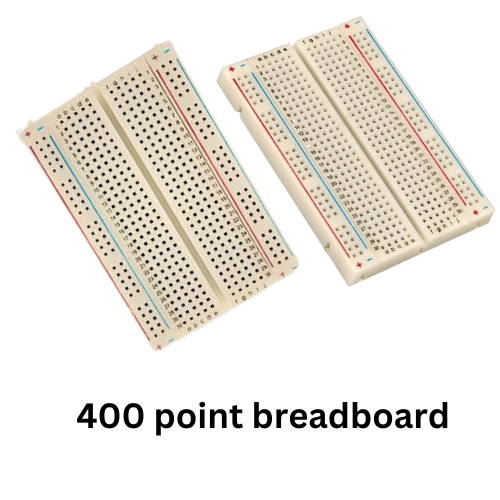A 400-point breadboard is a compact, solderless prototyping tool used for building and testing electronic circuits. It’s ideal for beginners and hobbyists due to its small size and ease of use. Here’s a breakdown of its key features and description:
🔧 Description of a 400-Point Breadboard
-
Total Tie Points:
400 connection points (also known as tie points or contact points) where electronic components and wires can be inserted. -
Layout Structure:
-
Terminal Strips:
The main area has 300 tie points arranged in two halves, each with 5-hole rows. These are where ICs, resistors, capacitors, and other components are placed. -
Power Rails:
Two columns on each side (one for positive voltage and one for ground) with a total of 100 tie points. These are used to distribute power across the board.
-
-
Dimensions:
Typically around 8.2 cm x 5.3 cm (varies slightly depending on the brand). -
Material:
Usually made of white ABS plastic with nickel or phosphor bronze contacts inside. -
Adhesive Backing:
Often comes with a peel-off sticky pad on the back to attach to surfaces or a mounting plate. -
Reusability:
Designed for multiple uses without damaging components or the board itself. -
Usage:
Commonly used in electronics prototyping, school/college projects, Arduino-based circuits, etc.


Reviews
Clear filtersThere are no reviews yet.